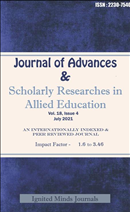Study on Existing Models with Reverse Logistics
Exploring the Efficiency of Reverse Logistics Models
Keywords:
reverse logistics, branch network, management, materials, stocks, data, reuse, products, consumer, producerAbstract
Reverse logistics is the element of the branch network where the management with competence and competence organizes, executes and controls the flow of materials, the processing of stocks and related data from the brand of use to the starting point, in order to regain his esteem. Reverse Logistics aims at all activities related to the reuse of products and materials. Reverse logistics is the exchange of products that begins in one place and continues safely in the next. Reverse logistics not only integrates the flow of materials from supplier to consumer, but also the material path of the products used by the consumer to the producer and supplier to reduce the impact on the climate. The model is a collection of intelligent mathematical connections that represent significant variables, include a real-world function that evaluates the voting array, and constrains responses to achievable qualities. Task seeking is the specialty of winning a conflict without fighting, or we can say that OR as a dynamic device is both a science and a skill. On the other hand, the models are designed to improve some objective measures.Downloads
Download data is not yet available.
Published
2021-07-01
Issue
Section
Articles
How to Cite
[1]
“Study on Existing Models with Reverse Logistics: Exploring the Efficiency of Reverse Logistics Models”, JASRAE, vol. 18, no. 4, pp. 337–341, July 2021, Accessed: Jan. 11, 2026. [Online]. Available: https://ignited.in/index.php/jasrae/article/view/13248











